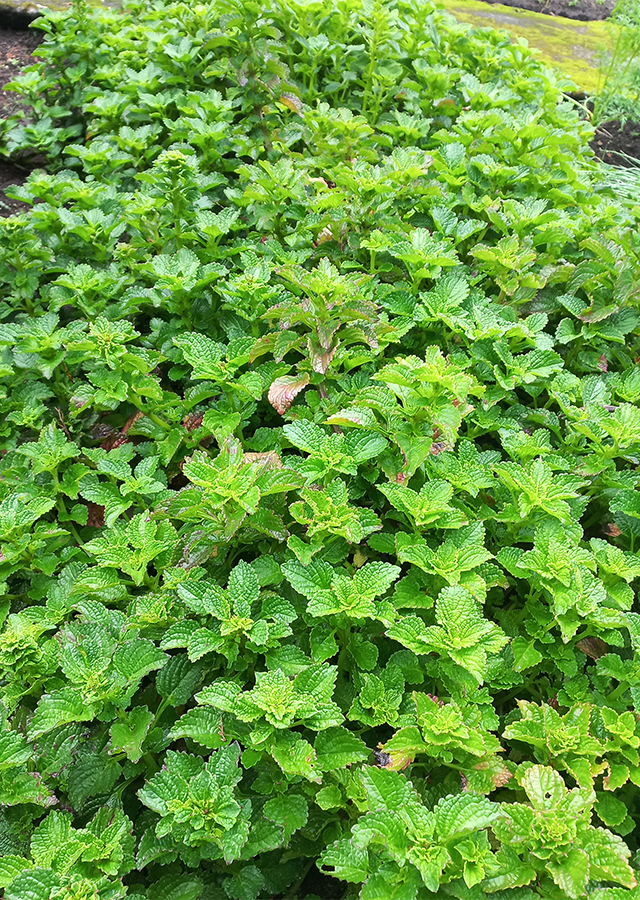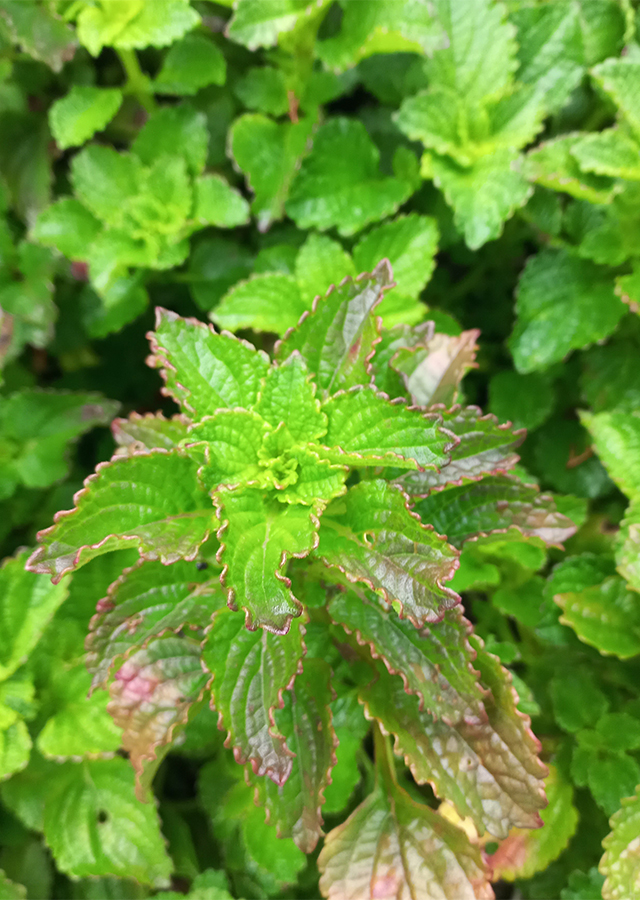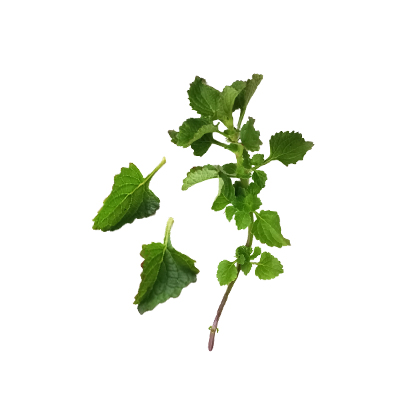Hausa Potato
Coleus rotundifolius (Poir.) A.Chev. & Perrot
Lamiaceae
Location in our garden
Vegetable



Synonym
Plectranthus rotundifolius (Poir.) Spreng.
Solenostemon rotundifolius (Poir.) J.K.Morton
Coleus dysentericus Baker
Habitus
Herbaceous. An aromatic, perennial, semi-succulent plant, growing up to 1 m tall.
Part Used
Leaves
Tuber
The Whole Plant
Growing Requirements
Full Sunshine
Habitat
Grassland
Terrestrial
Overview
Coleus rotundifolius originates from tropical Africa, where it is still found in the wild in East Africa. It is a tropical, multipurpose, minor tuberous root crop. The plant is one of the best staple tuber crops in terms of its distinctive fragrance, peculiar taste, medicinal, nutritional and economic values. It used to be widely cultivated as a root crop in the savanah belt of Africa, though it has largely fallen out of favour there. It is cultivated in Africa, but is much more commonly grown in South-East Asia. Hausa potato has declined considerably in importance both as a starchy vegetable and as a staple crop; it has been replaced by higher-yielding starch crops such as cassava and sweet potato. A widespread plant, it is classified as 'Least Concern' in the IUCN Red List of Threatened Species (2013).
Vernacular Names
Pomme de terre de Madagascar (French).
Agroecology
A plant of the moist tropics, found in a more or less wild setting, growing in grassland in the savannah at elevations up to 2,200 m. Coleus rotundifolius grows best in areas where annual daytime temperatures are within the range 17-27 °C, but can tolerate 8-36 °C. Lower night temperatures promote tuber development. It prefers a mean annual rainfall in the range 1,800-2,600 mm, but tolerates 1,200-4,000 mm. Plants are adapted to relatively high rainfall - the best yields are obtained in areas with rainfall well distributed through the growing season. Requires a sunny position. Prefers a well-drained sandy loam, but can tolerate a range of soils. Tolerant of poorer, dry soils, though yields are lower in such conditions. Yields are low in heavy soils. Prefers a pH in the range 6.5-7.5, tolerating 5.5-8, and dislikes waterlogged soils.
Morphology
- Roots/Tubers - form egg-shaped to elongated tubers which resemble potatoes (4.5 cm long, 1.5 cm wide), small dark brown tuber. The skin is rough and may be black, brown, reddish grey, or white.
- Stems - ascending succulent stem, 4-sided and densely hairy along the 4 corners of the stem.
- Leaves - has an aromatic mint-like smell, thick, fleshy leaves, pinnate venation, simple foliar type, opposite arrangement, cuneate base, stipules absent; petiole 2–3 cm long; blade ovate, 2.5–8 cm × 2–5 cm, cuneate at base, obtuse to acute at apex, margin crenate-dentate, puberulous and gland-dotted below, distinctly veined.
- Flower - inflorescence a terminal and slender false spike up to 15 cm long, consisting of compact, sessile dichasia, bisexual, zygomorphous; pedicel up to 1(–2) mm long; calyx campanulate, 1.5–3 mm long, glandular-hispid, upper tooth ovate, 2 lateral teeth small, 2 lower teeth almost completely fused; corolla 4–8 mm long, pubescent and gland-dotted, with curved tube, 2-lipped, upper lip erect, 4-lobed, whitish, lower lip boat-shaped, bluish purple; stamens 4, shortly united at base, curved within the lower corolla lip; ovary superior, 4-celled, style 2-fid.
- Fruit - round shaped, green in colour, and covered with membrane, consisting of 4 nutlets, but rarely developing.
- Seed - round shaped, small black.
Cultivation
- Generative propagation is by seed - not normally used for propagation.
- Propagated vegetatively by tubers, suckers or sof t-woody stem cuttings.
- Cuttings about 10-20 cm long - they can be difficult to root.
- Division of sprouting tubers - they are planted about 5-8 cm deep.
Chemical Constituents
Amino acids (arginine, aspartic and glutamic acids), phenols, alkanes, aldehydes, carboxylic acid, iso cyanides, alkyne, isocyanate, ketones.
Traditional Medicinal Uses
- The leaves are sometimes used in traditional medicine for purposes such as the treatment of dysentery.
- The plant is also used to treat blood in the urine as well as eye disorders.
Part Used
Reference Sources
- Enyiukwu, D.N., Awurum, A.N., and Nwaneri, J. (2014). Potentials of Hausa Potato (Solenostemon rotundifolius (Poir.) J. K. Morton and Management of its Tuber Rot in Nigeria. DOI:10.15580/GJAFH.2014.2.010314008.
- Fern, Ken. (2022). Useful Tropical Plants: Plectranthus rotundifolius. http://tropical.theferns.info/viewtropical.php?id=Plectranthus+rotundifolius. 05-03-2022.
- Kew Royal Botanic Gardens. (No date). Plants of the World Online: Coleus rotundifolius (Poir.) A.Chev. & Perrot. https://powo.science.kew.org/taxon/urn:lsid:ipni.org:names:446145-1. 05-03-2022.
- Manikandan, S., Alagu Lakshmanan, G.M.,Dr., Chandran,C. (2016). Phytochemical screening and evaluation of tuber extract of Plectranthus rotundifolius Spreng. By GC-MS and FT-IR spectrum analysis. International Journal of Herbal Medicine, 4(2):36-40.
- National Park of Singapore (2021). Flora Fauna Web: Plectranthus rotundifolius (Poir.) Spreng. https://www.nparks.gov.sg/florafaunaweb/flora/5/7/5781. 05-03-2022.
- Nkansah, G.O. (No date). Solenostemon rotundifolius (Poir.) J.K.Morton. https://www.prota4u.org/database/protav8.asp?g=pe&p=Solenostemon+rotundifolius+(Poir.)+J.K.Morton. 05-03.2022.

